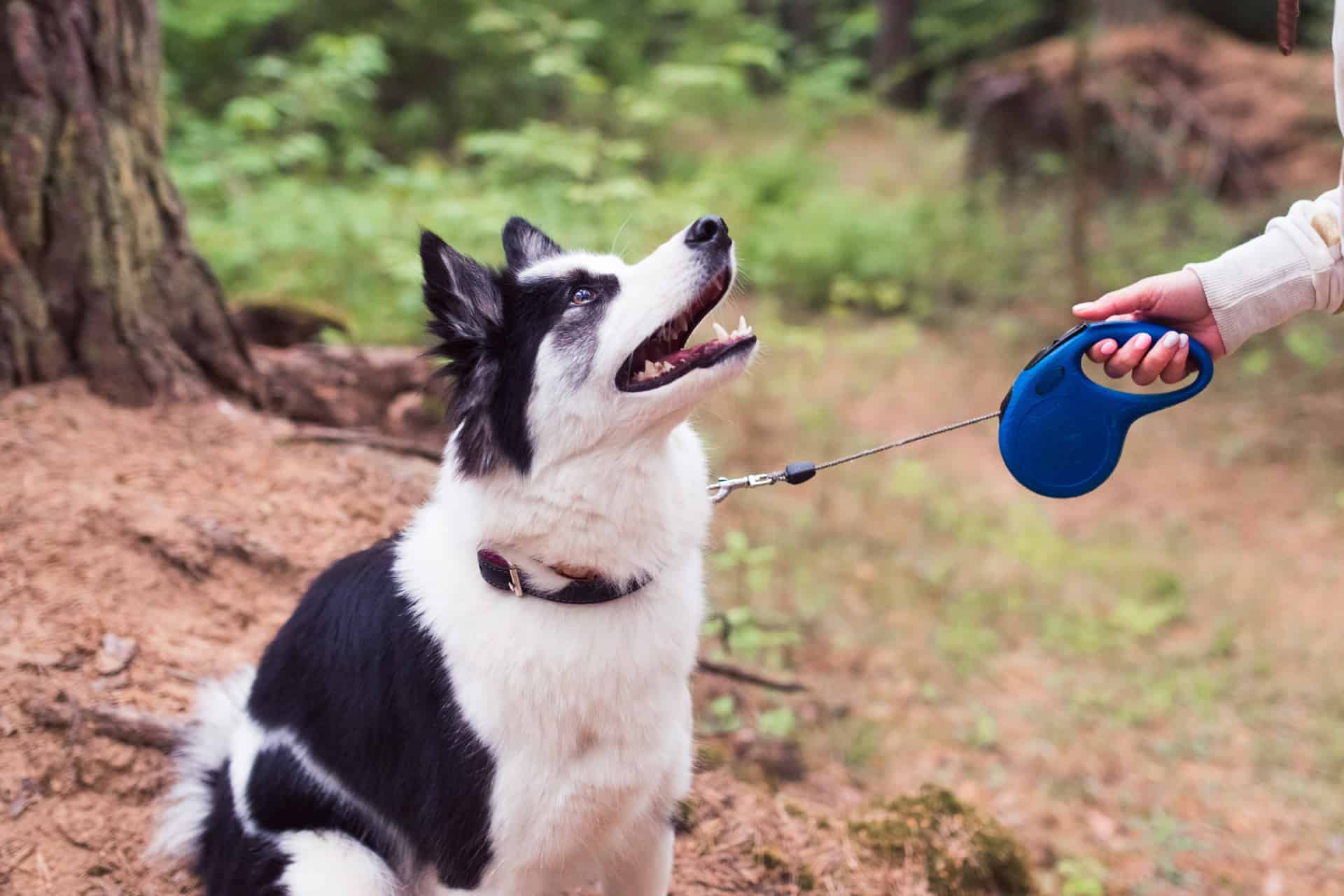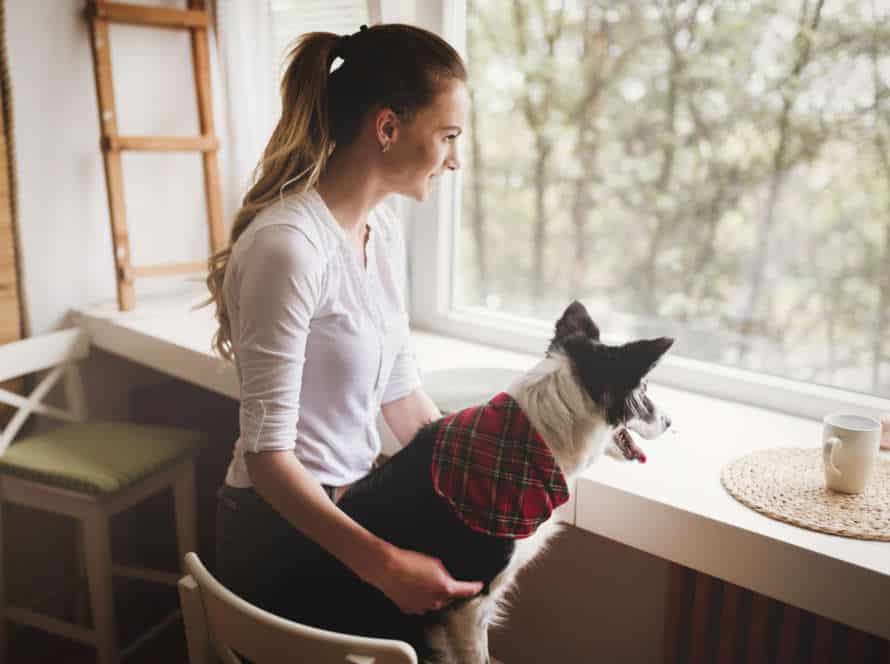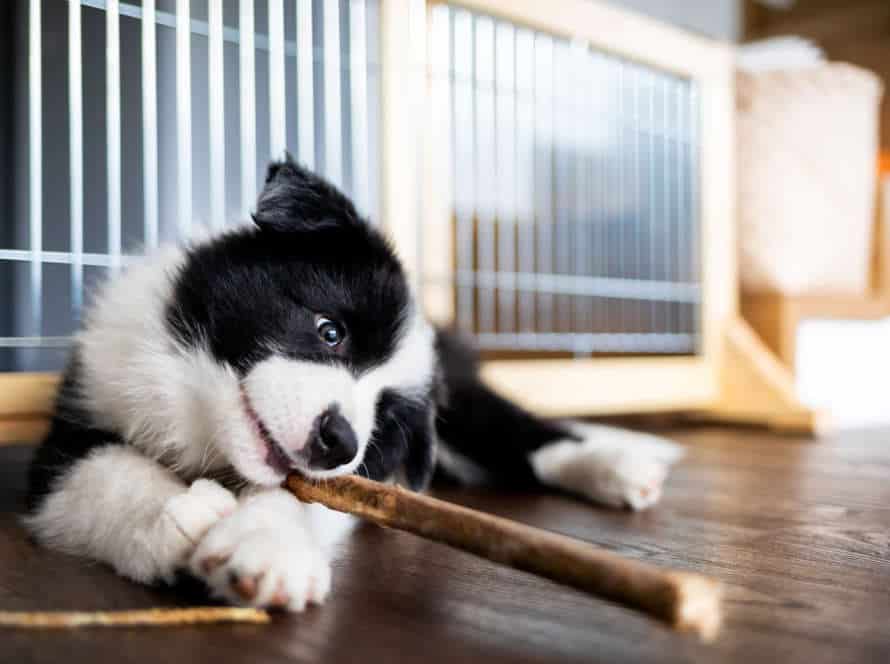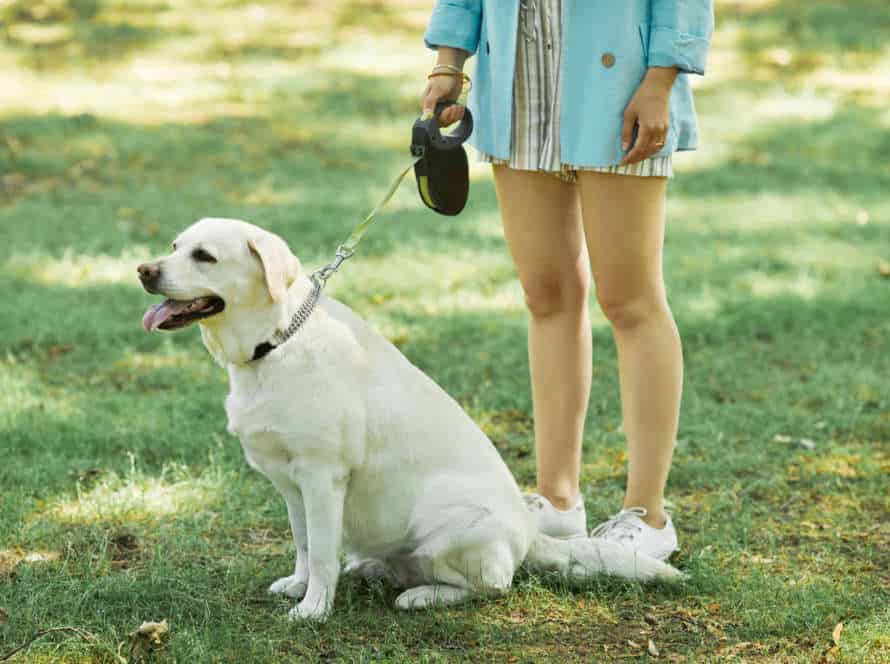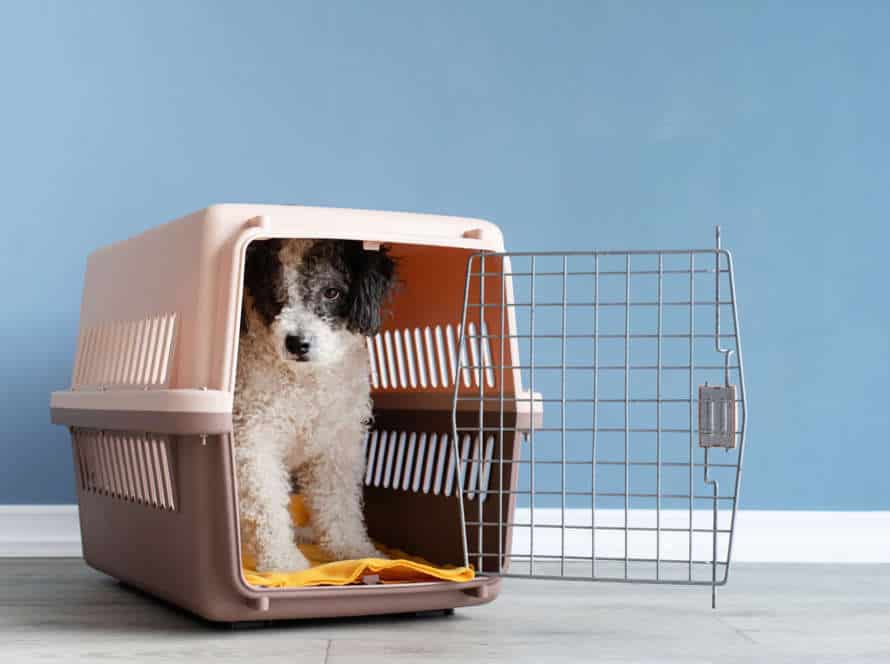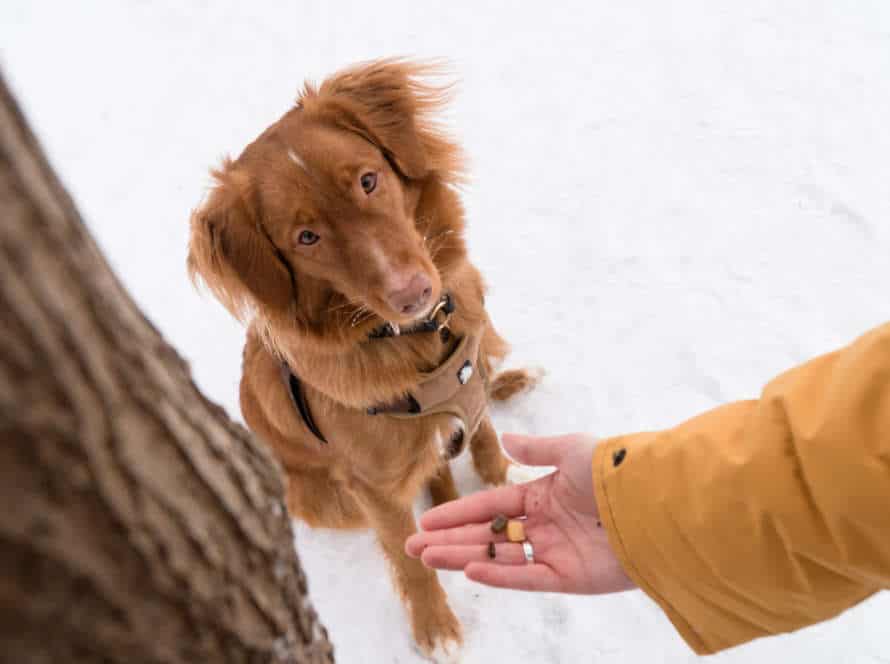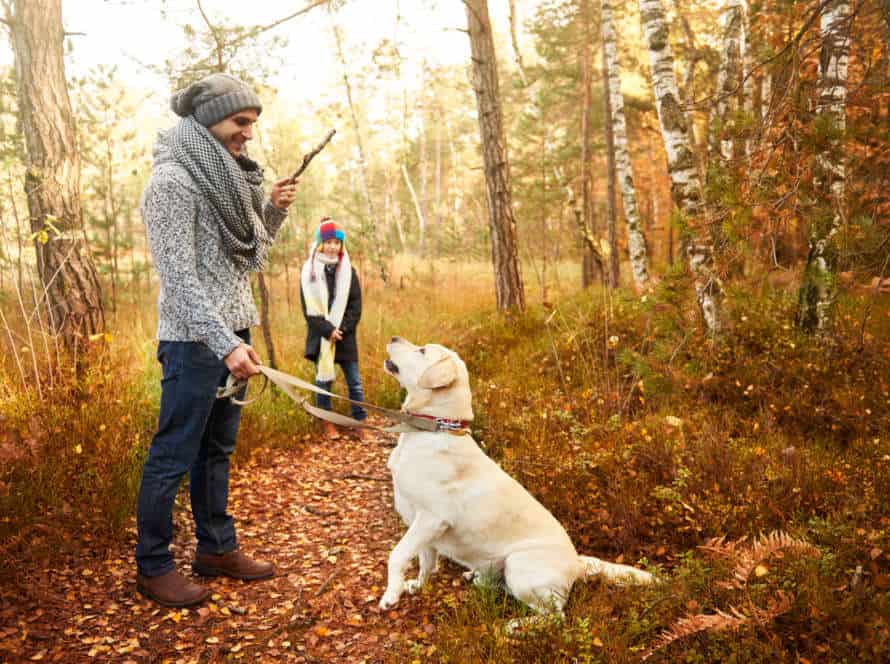Training Techniques to Improve Your Dog’s Leash Reactivity
Leash reactivity in dogs can be tough to deal with. But, the right training techniques can help improve it! Here are some that work:
- Counterconditioning: Change your dog’s emotions when they see the trigger. Give them something nice – like yummy treats – when the trigger is present. They’ll associate it with good feelings instead of anxiety and aggression.
- Desensitization: Gradually expose your dog to the trigger in safe settings. Start from far away, and slowly decrease the distance as they get more comfortable.
- Positive Reinforcement: Reward desired behaviors like calmness and non-reactivity. This will reinforce these behaviors and you’ll see more of them in the future.
- Leash-Training Games: Play fun games like “Follow the Leader” and “Red Light, Green Light” to teach your dog to walk calmly on a leash.
Pro Tip: Be patient and consistent with the training. With time and practice, you can help improve your dog’s leash reactivity and have stress-free walks together.
Understanding Leash Reactivity
Leash reactivity is an issue familiar to many dog owners. To manage it, it’s important to understand the cause. Is your pooch over-excited in the presence of other dogs or people? Or is he anxious due to a lack of socialization? Once you know what’s causing it, you can create a training plan to reduce leash reactivity.
Defining Leash Reactivity in Dogs
Leash reactivity in dogs is when they overreact to external stimuli while on a leash. This can include barking, lunging, or pulling. It is common among all breeds and ages of dogs. It can be caused by fear, anxiety, lack of socialization, or previous negative experiences.
Here are some training techniques that can help:
- Desensitization: Slowly expose your dog to the stimulus in a controlled environment to teach them to stay calm.
- Counter-conditioning: Teach your dog that the stimulus is linked with positive things like treats or a toy.
- Positive reinforcement: Reward good behavior with treats, praise, or playtime.
- Leader-follower technique: Show your dog you are in control of the situation by being the pack leader.
Training takes patience, consistency, and dedication. Consider seeking the help of a professional dog trainer if needed.
Common Examples of Leash Reactivity Behavior
Leash reactivity is a common behavior in dogs. It can have bad effects on walks and socializing with other dogs or people. Examples of leash reactivity behaviors:
- Barking or lunging at other dogs/people.
- Growling or snarling when other dogs/people come near.
- Whining, pulling, or trying to get away from the leash.
These behaviors can be managed by leash reactivity training techniques. Positive reinforcement, counter-conditioning and desensitization can help create positive associations with other dogs or people when walking. A professional dog trainer or behaviorist should be consulted to create a training plan for your dog. With time and patience, leash reactivity can be overcome so walks are more relaxed and social.
Causes and Triggers of Leash Reactivity
Leash reactivity is a common problem with dogs that can make walks hard. Knowing what causes and triggers it is important for helping your dog’s behavior on walks.
Here are some typical causes and triggers:
- Fear and anxiety: Dogs may be reactive due to fear or nerves around other dogs, strangers, or new places.
- No socializing: Dogs without proper socialization may be reactive to other dogs or people.
- Past: Bad experiences on past walks can cause leash reactivity.
- Frustration: Dogs not able to reach or play with other dogs can get frustrated and be reactive.
To help, use positive reinforcement and desensitize the dog to triggers. Ask a pro trainer if needed.
Tip: Stay calm when dealing with a leash-reactive dog to avoid making it worse.
Positive Reinforcement Training Techniques
Positive reinforcement training is a must when it comes to improving your pup’s leash reactivity. Employ rewards to encourage your pup to do desirable behaviors, and avoid doing the other ones. To teach your canine to walk with you on a leash, give them treats and verbal praise.
Here are some positive reinforcement techniques that can help you with your pup’s leash reactivity:
Counter-Conditioning
Counter-Conditioning is a great way to improve your dog’s leash reactivity. It works by:
- Identifying the triggers that cause your pup to be reactive. These can be other dogs, joggers, bikes, and loud noises.
- Creating a positive connection with the trigger. Do this by exposing your dog to it from a safe distance and offering treats and praise.
- Decreasing the distance as your pup becomes more relaxed.
- Being consistent, patient, and rewarding your dog for good behavior.
With time and practice, your dog will learn to connect the trigger with good experiences and become less reactive on the leash.
Desensitization to the Leash and Trigger Stimuli
Desensitizing your pup to leash and trigger stimuli is a great training method to help with leash reactivity. Here’s how to do it:
- Choose a trigger that causes reactivity–maybe another dog or a stranger.
- Introduce the stimulus at low intensity, from a distance that won’t make your pup react.
- When your pup sees the trigger, give treats, kind words, and petting as positive reinforcement.
- Do this several times until your pup is calm around the trigger.
- Little by little, decrease the distance between your pup and the trigger while giving positive reinforcement.
- Eventually, you’ll desensitize your pup to the stimuli and improve their leash reactivity.
Pro tip: Use positive reinforcement to reward good behavior, not punishments for bad behavior. Be patient and consistent.
Teaching Self-Control Techniques
Teaching self-control is key to better leash behavior. Positive reinforcement training can help with this. Here are a few tips:
- Desensitization: Exposing your dog to things that trigger reactivity, like other dogs or people, but in a safe and controlled setting. Plus plenty of rewards for good behavior.
- Counter-conditioning: Linking triggers with something positive, like treats or playtime, to create a positive link.
- Obedience training: Exercises like “sit” or “stay” during walks can improve focus and self-control.
- Positive reinforcement: Rewarding desired behavior encourages self-control and better leash behavior.
Clicker Training and Reward-Based Reinforcement
Clicker training and reward-based reinforcement are two positive reinforcement techniques.
They can help with leash reactivity.
Clicker training involves using a clicker to create a distinct sound that signals to your dog when they have done the desired behavior.
The sound of the clicker becomes connected to the reward.
A treat, for example, can motivate your dog to do the behavior again.
Reward-based reinforcement rewards your dog when exhibiting the desired behavior.
It can be treats, verbal praise, or physical affection.
For leash reactivity training, identify the behaviors that trigger your dog’s reactivity.
Use the clicker to reinforce calm and non-reactive behavior.
Reward your dog for showing these behaviors.
With consistent practice and positive reinforcement, your dog can learn to associate calm behavior with positive outcomes.
This can reduce their leash reactivity over time.
Effective Management Techniques
When your pup reacts to something on the leash, taming the situation can be tough. Keeping calm is essential. Management techniques are the best way to reduce your dog’s leash reactivity. Here are a few of the best ones:
- Positive Reinforcement Training: Use treats or toys to distract your dog and encourage good behavior.
- Changing Directions: If your dog starts pulling or reacting to something, quickly change your direction to distract them.
- Creating Space: Cross the street, step to the side or even turn and walk in the opposite direction to create space between your dog and the trigger.
Use of tools like Head Halters and No-Pull Harnesses
Head Halters and No-Pull Harnesses are great tools to help your pup with leash reactivity.
Head Halters give you control over their head, steering their focus and stopping them from pulling. No-Pull Harnesses put pressure over their chest, discouraging pulling and helping with walking.
To get the best out of these tools:
- Introduce them gradually, giving time for adjustment and linking them to positive experiences.
- Use treats or praise to reward good behavior.
- Don’t use tools instead of training and addressing underlying issues, get professional help if needed.
- Make sure the tool fits correctly, no discomfort or harm.
Avoiding trigger stimuli and high traffic areas
Dealing with leash reactivity? Avoiding trigger stimuli and high traffic areas is key for effective management. Here are tips to help:
- Gradual Exposure: Introduce stimuli at the lowest level. Increase as your dog feels more comfortable.
- Reward-Based Training: Positive reinforcement and rewards for good leash behavior. Treats and toys work great!
- Distraction Techniques: Redirect attention away from triggers. Use toys or activities for distraction.
Results come with consistency and patience. Try these techniques, and help your pup be more comfortable and calm on walks!
Establishing clear and consistent communication with your dog
Having a clear & steady way of talking to your dog is needed to better their leash reactivity. Here are some useful techniques to help you educate your pup:
- Be concise & constant with verbal & non-verbal signs. Let them know what you expect by using easy-to-understand cues, tone & body language. Use the same words every time during training & constantly give them praise.
- Identify & dodge trigger stimuli. Discover what makes your dog react badly to the leash & try to stay away from those scenarios while teaching them.
- Reward them when they do something good. Positive reinforcement will motivate your pup to keep up the desired behaviour. Show your appreciation using compliments, snacks or other positive situations.
- Be patient. Knowing when to finish a lesson & avoiding anger is of big importance for keeping focus & having a clear conversation with your pet.
- Keep a routine. Have a regular schedule in your pup’s life to create consistency & help them understand what is expected from them.
Enlisting the help of a Professional Trainer
Having trouble managing your pup’s leash reactivity? A professional dog trainer can help. Here are three methods they may use:
- Counterconditioning: Replace bad behavior with a good one, and reward them with treats or positive reinforcement.
- Desensitization: Gradually expose them to things that make them react, but at a level that doesn’t cause anxiety.
- Reward-based training: Reward good behavior, not bad. Train them to respond to commands, like “heel” or “stay”.
A professional trainer can help you manage your pup’s leash reactivity and improve their behavior.
Socialization and Obedience Training
Socialization and obedience training are crucial for any pooch. This is especially true if you want to quash leash reactivity. Training and socialization help to form a connection between you and your pup. They also teach them to listen to orders. Plus, it helps stop pesky behaviors, and you can take them out in public without being concerned. Let’s find out more about these training tools and activities.
Importance of early Socialization and Basic Obedience Training
Socializing and training a dog early is vital for their wellbeing. It helps them be comfortable in different scenarios and around unfamiliar people, creatures and objects. Teaching simple commands like sit, stay, come, and heel helps you ‘talk’ to your pup and boosts good behavior. Leash reactivity often comes from fear or stress, which can be caused by not socializing or training properly. Training and positive reinforcement can help reduce leash reactivity. Introducing your pup to new people, animals, and environments builds their confidence and reduces anxiety, leading to a much happier and healthier pup.
Training for Appropriate Leash Manners and Behaviors
Train your pup right with leash manners and behaviors. Here are the techniques to help with leash reactivity:
- Start with socializing! Expose your dog to different people, other animals, and even new places. This teaches them how to act in various settings.
- Reward them for good conduct on the leash. Give treats, applause, and affection.
- Use negative reinforcement sparingly. Redirect them and reward them instead of punishing.
- Obedience training is a must. Teach ‘sit’ and ‘stay’. This gives you control over your pup on the leash.
- Be constant. Repetition helps successful training. Practice often to reinforce good conduct.
- Pro tip: If your pup’s leash reactivity is extreme, get a professional dog trainer to help.
Confidence Building Exercises and Games
Confidence-building exercises and games are great for your dog’s socialization, obedience training, and to reduce leash reactivity. Here are some techniques you can try:
- Set up an obstacle course in your yard with cones, tunnels and hurdles. Guide your pup through the course with positive reinforcement to boost their confidence and agility.
- Hide treats or kibble in a room or yard and get the dog to find them. This game increases confidence, sharpens problem-solving skills and reduces fearfulness.
- Take your pup on regular walks so they become more comfortable and calm in different environments. Positive socialization reduces reactivity to new things.
- Teach basic commands like “sit,” “stay,” and “come” to build confidence and strengthen your bond. Start with short sessions and use positive reinforcement.
Practice these activities and you’ll help your pup become more confident and reduce leash reactivity.
Socialization with people, dogs, and other animals
Socialization is key for obedience training dogs. It requires introducing your pup to various scenes, people, and creatures to help them feel comfortable and act properly in different situations. Here are ways to make your dog’s leash reactivity better with socialization:
- Take it Easy: Show your doggo new experiences slowly and don’t push them to interact with anything or anyone they’re scared of.
- Join Obedience Training Classes: These classes let your pup mingle with other canines and humans while learning commands and being praised and rewarded for good behavior.
- Use Rewards: Give treats, toys, and compliments to positively reinforce your pup’s behavior.
- Let Your Dog Experience Different Social Situations: It’s important to let your pup experience different settings, people, and animals to help them learn how to behave in various circumstances.
With patience and consistency, socializing your pet properly can greatly enhance their leash reactivity and overall conduct.
Exercise, Mental Stimulation, and Routine
To train your pup to be calmer while on a leash, you need patience and consistency. Exercise, mental exercise, and habit are all vital pieces to enhancing your dog’s obedience and leash response. In this article, we’ll learn about the main points of each of these and how they help with positive reinforcement training.
The Importance of Exercise for Dogs with Leash Reactivity
Exercise is vital for dogs with leash reactivity. It helps them manage behavior and emotion. Regular exercise, combined with mental stimulation and a routine, keeps dogs calm when walking. To incorporate exercise, try these techniques:
- Take a walk before training. This releases energy and makes learning easier.
- Play interactive games like fetch, tug-of-war, or hide-and-seek. This builds a strong bond and stimulates them.
- Incorporate scent work. This engages their sense of smell and reduces anxiety.
- Vary the routine. This prevents boredom and improves their health.
Exercise, mental stimulation, and routine will help your dog manage their leash reactivity and live better.
Providing Mental Stimulation through Puzzle Games and Training
Puzzle games and training exercises can bring mental stimulation to your pup! They can even improve leash reactivity with regular practice.
Treat dispensing toys, interactive puzzles, and scent games are all popular puzzles. Training exercises can also give mental stimulation and help with leash reactivity. Walking on a leash with treats, making eye contact, and commands like sit and stay can all help. Pro tip: Positive reinforcement and short, fun sessions make it enjoyable for your dog!
Establishing a consistent routine for your dog
For better pup behaviour and leash reactivity, a consistent routine is paramount. Here are some training tips to provide exercise and mental stimulation:
- Exercise: Get your pup active daily with at least 30 minutes of walking, running, fetch, or other activities.
- Mental Stimulation: Stimulate their mind with puzzle toys, scent work, or obedience training.
- Routine: Set a daily routine of regular feeding, exercise, play, and relaxation.
Combining exercise, mental stimulation, and routine will improve your pup’s behaviour and lessen leash reactivity. Plus, reward them with treats and praise for good behaviour to encourage positive habits.
Maintaining your dog’s physical and mental health for optimal behavior.
Keep your pup in tiptop shape! Both physical and mental health is essential to avoid behavioral issues. Get them moving with regular exercise, stimulating their minds, and setting a routine. This can help leash reactivity and general behavior.
Here are some tips for maintaining your dog’s health:
- Exercise: Dogs need 30+ minutes of exercise daily for mental and physical health. Walking, jogging, fetch, and swimming are all great options.
- Mental Stimulation: Dogs need mental stimulation as much as physical exercise. Train them, give them toys, play games, and other activities to keep their minds sharp.
- Routine: Dogs do best when they know what they’re doing. Feeding, exercise, and training should all be at the same time every day.
- Training Techniques: Positive reinforcement is key. Treats, verbal praise, and clicker training can reduce reactivity. Also, work with a professional to address any underlying behavior issues.
Give your pooch a balanced lifestyle. Exercise, mental stimulation, and a predictable routine will keep them happy and healthy!
Frequently Asked Questions
Q: What is leash reactivity in dogs?
A: Leash reactivity is a term used to describe a dog’s behavior of becoming overly excited, anxious, or aggressive when walking on a leash around other dogs, people, or objects.
Q: Can leash reactivity be prevented in dogs?
A: It is difficult to prevent leash reactivity entirely, especially in breeds with high prey drives or guarding instincts. However, early socialization, regular exercise, and positive reinforcement training techniques can help reduce the likelihood of reactivity.
Q: What are some effective training techniques for addressing leash reactivity in dogs?
A: Some effective techniques for improving leash reactivity in dogs include positive reinforcement training, counter-conditioning, desensitization, and using a front-clip harness or head harness.
Q: How long does it take to see improvement in a dog’s leash reactivity with training?
A: The amount of time it takes to see improvement in leash reactivity can vary depending on the individual dog and the severity of their reactivity. However, with consistent and patient training, improvement can usually be seen in a matter of weeks or months.
Q: Can professional trainers help with addressing a dog’s leash reactivity?
A: Yes, professional trainers who specialize in working with reactive dogs can be extremely helpful in addressing leash reactivity issues. They can provide personalized training plans and offer guidance and support throughout the training process.

